Atelier Data combines wood, concrete and cork for Varatojo House facade
Rows of disused railway sleepers slide open to reveal the ground floor of this copper coloured house in Portugal by Atelier Data (+ slideshow).
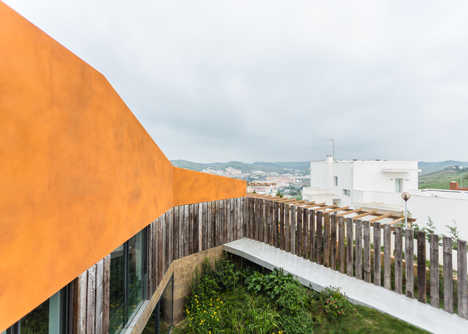
Portuguese studio Atelier Data designed Varatojo House in Lisbon for a family who wanted to be close to the city whilst enjoying views of the surrounding landscape.
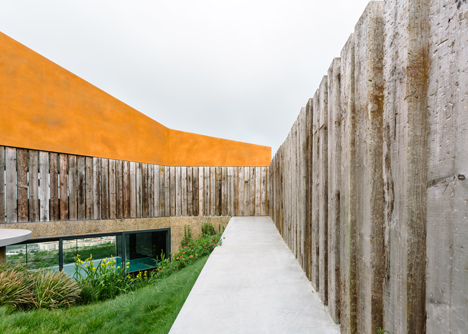
A ramp leading to the entrance of the property is bordered by a row of vertically standing railway sleepers, which continue onto the facade and can be slid open like curtains.
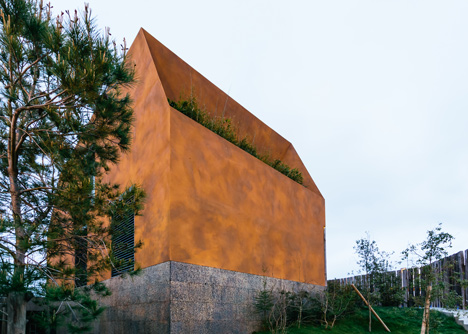
"Recycling of materials such as the walls of wooden former railway sleepers introduce a certain experimentalism and innovation from the way the material is usually used," said Atelier Data.
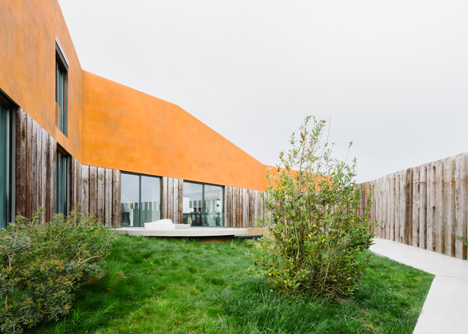
When the timber slats are shut, the property appears windowless to onlookers and the entrance disappears behind the recycled sleeper facade.
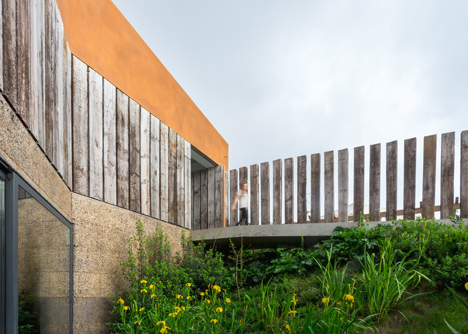
Copper coloured cement and cork clad the exterior of the property, which rises up from a sunken wildflower garden occupying the centre of the plot.
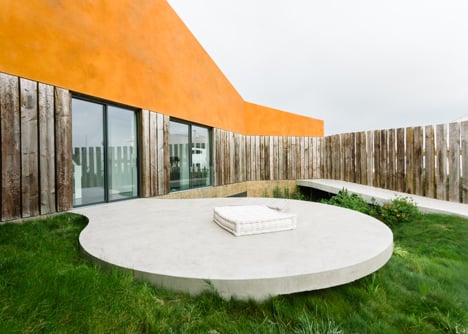
The architects planted banks of indigenous foliage that can be found in the surrounding Portuguese countryside, including Etruscan honeysuckle and roses to complement a grove of oak trees, on the site.
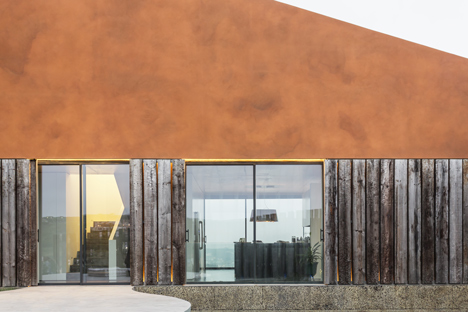
"We wanted to encourage a strong complementarity between the house and natively planted garden, in order to create an intense visual relation between the construction and natural elements," the firm explained.
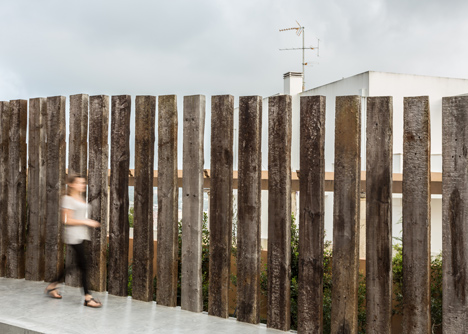
The house features a spiralling plan, which helps to protect the property from strong northern winds and allows the residents to take in views of the valley on one side and the city on the other.
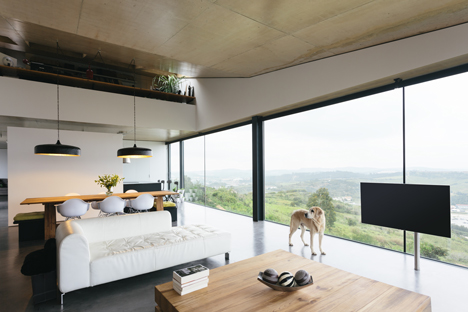
A concrete island at the centre of the spiral acts as a patio area and connects to the living room through a set of sliding glass doors behind the timber curtain.
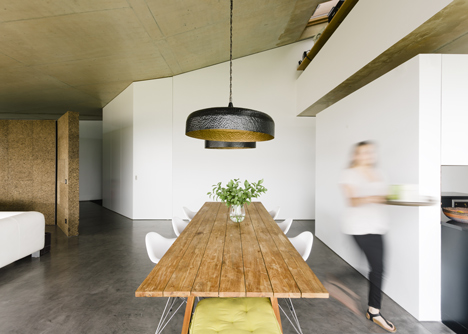
Leading in from the entrance ramp, an open plan living and kitchen area enjoy views of the valley below and are lit by low hanging metal shades. The architects kept the interior interventions minimal to give the house a sense of space and separated the entrance from the living room with a cork screen.
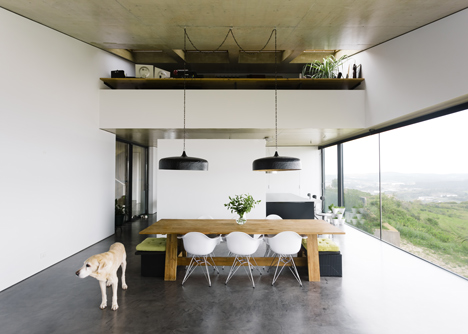
A guest bedroom and two children's bedrooms sit along the north-west wall of the house and a playroom and study area face out to the garden.
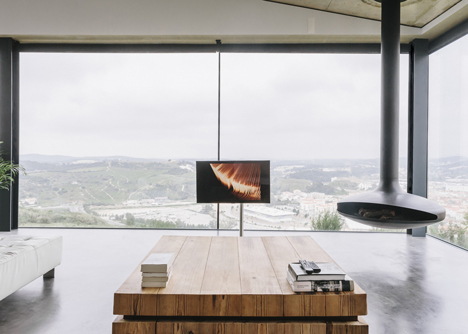
Reclaimed timber planks form a staircase at the centre of the building which leads up to a master suite on the first floor.
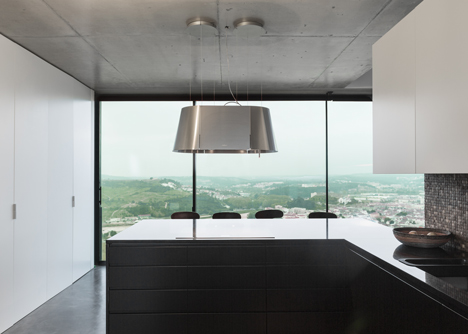
An en suite bathroom with a sunken bath tub is sheltered by a boxed window garden that nestles into the facade.
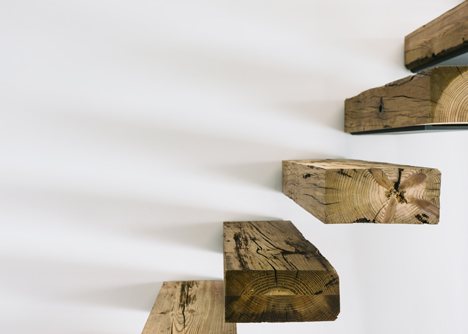
On the other side of the bedroom, a balcony with wooden decking looks out across the surrounding landscape and acts as a trap for the midday sun.
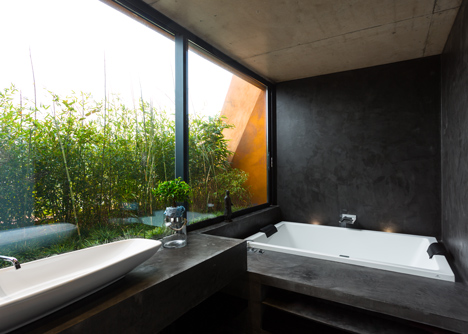
Continuing back through the house, a sunken lower floor has been designed as an entertainment level with a wine cellar that sits in the circular base of the concrete patio.
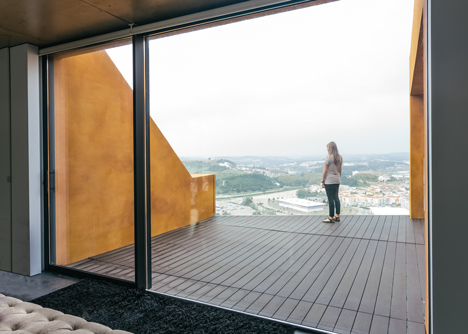
An indoor swimming pool with matte black plaster walls looks straight through the house, with glass doors that open to the garden and a perspective across to the northern hills.
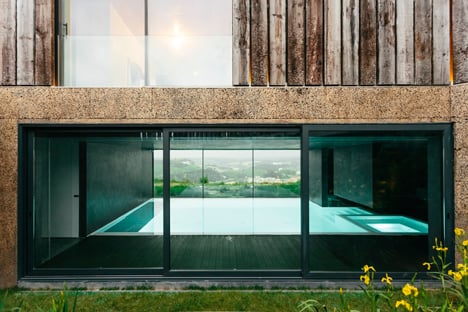
A home cinema room and gym can also be found on the lower level, along with a garage for the family's cars.
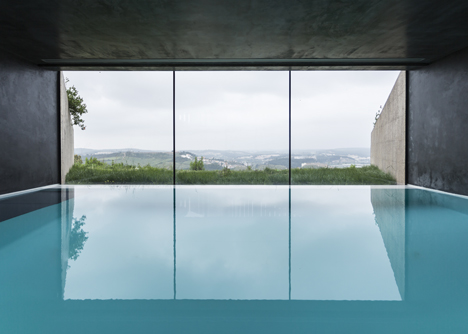
At night, blue spotlights illuminate the exterior and a nearby street light casts shadows through the timber slats that elongate across the property.
Photography is by Richard John Seymour.
Here's some more text from Atelier Data:
Varatojo House, Torres Vedras, Portugal
The Varatojo House is placed on a Hill, east from the city of Torres Vedras, Portugal. Set in a polygonal configuration plot and given its sun exposure (predominantly North/South) and also its main Northern wind direction, the design strategy began by considering the following issues.
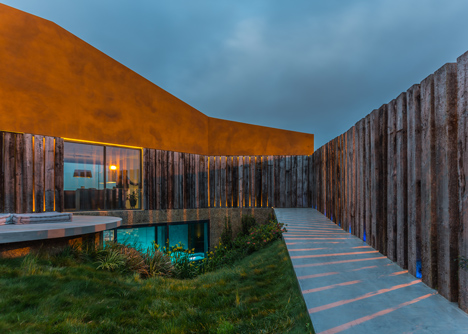
Promoting relationship between building and landscape, taking advantage of the place's overlooking position over the city, castle and surroundings. Encouraging a strong complementarity between the house and the garden in order to create an intense visual relation between the inside and the outside, between construction and natural elements.
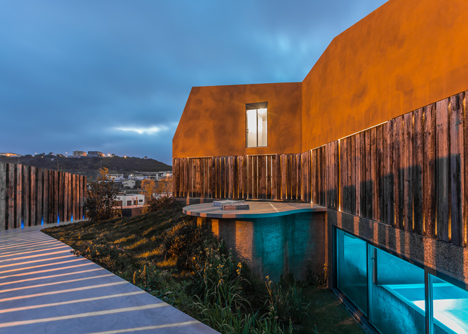
Creating transversal relations between the North Side - (view) and the South side - (inner garden) mainly through the pool on the lower floor and modelling land of the garden. Recycling of materials such as the walls of wooden pilings (former railway sleepers), introducing a certain experimentalism and innovation from the way the material is usually used for and thought to be. Encouraging the use of native vegetation in the garden.
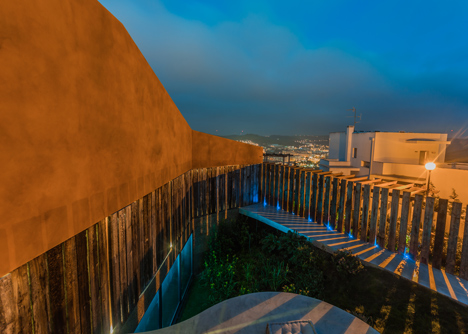
Design Concept
The house is shaped by a spiral gesture intending to take advantage of the plot outline. We opted for the construction of a limit, a kind of line that gradually takes shape and thickness to accommodate the housing program. This gesture starts with the ramped access to the lot and ends on the opposite side of the house, achieving at this point two-stories high, thereby the contour of the house also reinforced this "gesture in spiral". The adopted design strategy allowed us to create a living space on the site's south side, protected from the strong Northern winds, which forced the existence of the main construction on the north side.
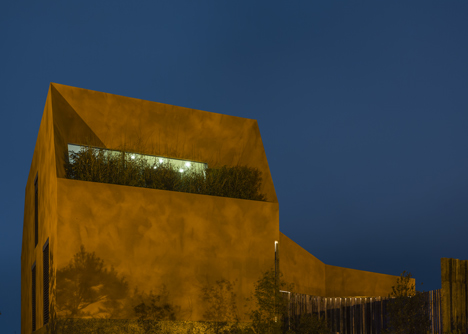
Program
From a functional standpoint, the program is distributed in three floors. The ground floor centralises most of the program. There is located the common areas - kitchen, living room and dining room - constrained to a single and continuous open space, enhanced by the ceiling plan. On the other hand, the rooms' wing (with a much more restricted access) contains guest and children's rooms, separated by a playing/studying room. On the 1st floor is located the master bedroom with a deep balcony facing North, and on the South, there is a bathroom with a big window facing a small garden as its background. Still on this floor there is a library, a mezzanine space over the living space. On the lower floor the pool is the central space through where it is possible to connect with both north sights and south private garden, and also to enjoy the reflected landscape on the water.
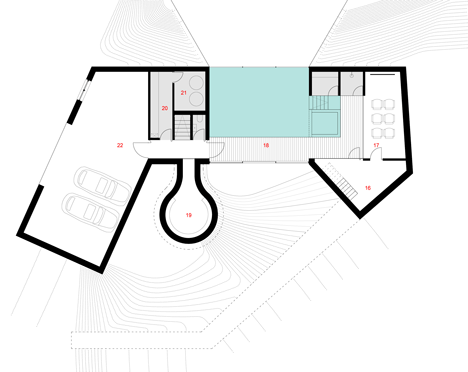
Material Options
On one hand we opted for the use of traditional materials and coatings, as exemplified by the cementitious materials, plaster, timber and cork, and, on the other hand, we considered the reuse of railway sleepers within a distinct logic of its conventional use introducing some innovation and experimentation in the search for new possibilities of materials' use. Thus we suggest new interpretations from the current and traditional construction, through design but also through material options.
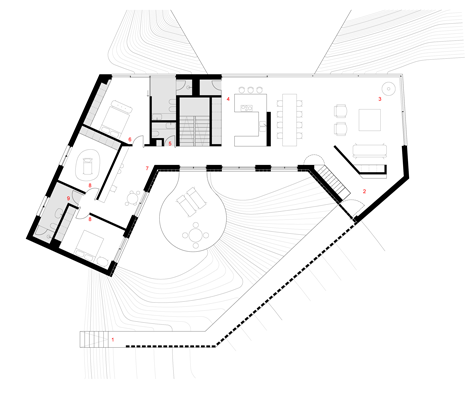
Vegetation: Elasticity and plasticity
Define a grove of Quercus faginea subssp. broteroi (Portuguese oak), seeded the phytogeographic association where the plot is located. The dominant choice of native vegetation for the garden (trees, shrubs and herbaceous) takes advantage of site soil and climate characteristics, creating an ecological system integrated into the Landscape of the Region (Genius loci).
On the North hillside, a Kermes oak shrubland, appear in a limestone substrate. Exposed to the wind, the Kermes oak shrubland have as main actors the Quercus coccifera and mastic (Pistacia lentiscus) that associates with various species such as: the Mediterranean buckthorn (Rhamnus alaternus); the Flax-leaved Daphne (Daphne gnidium); the Sage-leaved Rock Rose (Cistus salvifolius); the Lusitanian gorse (Ulex densus); the Rough bindweed (Smilax aspera) and the Etruscan honeysuckle (Lonicera etrusca).
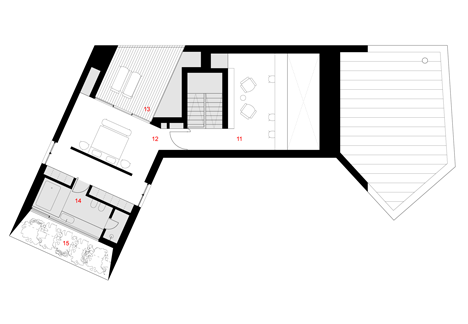
On the sheltered South side, arises the Portuguese oak with arborescent shrubs like Laurustinus (Viburnum tinus); the single-seed Hawthorn (Crataegus monogyna); the Laurel (Laurus nobilis) and herbaceous like Bear's breeches (Acanthus mollis) and yellow irises (Iris pseudacorus).